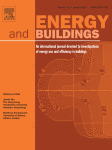A Methodology for Estimating Rebound Effects in Non-Residential Public Service Buildings: Case Study of Four Buildings in Germany
Non-residential buildings comprise a quarter of the EU building stock and cause approximately one-third of this stock's energy consumption. The imperative to reduce their energy consumption is widely accepted in EU countries. It is now common to upgrade buildings to increase energy efficiency, but studies in the residential sector indicate a significant gap between energy performance and design. As there do not yet appear to be studies on rebound effects in non-residential buildings this paper develops a methodology to fill this gap. Rebound effects under two definitions were estimated for four recently retrofitted German public service case study buildings. Semi-structured interviews with building occupants and operators identified credible determinants of energy consumption.



